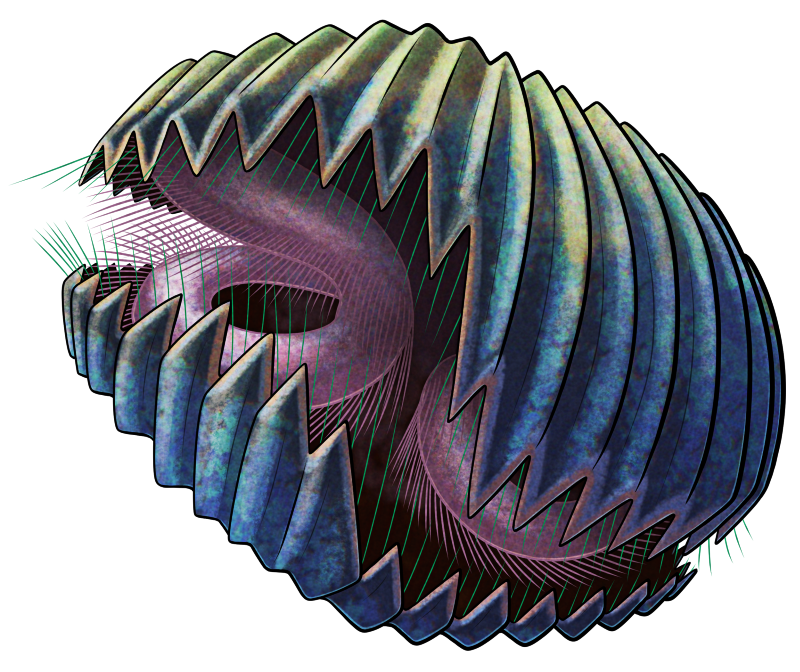Brachiopods (also known as “lamp shells”) superficially look very much like bivalves, but these two groups aren’t very closely related to each other – although they’re both lophotrochozoans, their last common ancestor probably lived sometime in the Ediacaran at least 560 million years ago, and their similarities in appearance are due to convergent evolution.
The two valves of their shells are also arranged differently. Bivalve shells grow on their left and right sides and are usually symmetrical, but brachiopods form their shells from the upper and lower surfaces of their bodies.
As a result brachiopod shells are usually unequal in size and shape but have their own plane of bilateral symmetry down the center – but some of them still managed to become asymmetrical anyway.
Torquirhynchia inconstans lived during the Late Jurassic, about 161-145 million years ago, in the warm shallow seas that covered what is now Europe and Iran. Around 3cm across (~1.2″) it had a strongly ridged shell with an asymmetrical closing edge, positioned high on one side and low on the other.
This unusual uneven arrangment is thought to be an adaptation to living on soft sediments. Asymmetrical brachiopods like Torquirhynchia may have lived with one side of their body mostly buried into the seafloor, and twisted their shell edges so the still-exposed half was raised up to better function for water circulation and filter-feeding.

